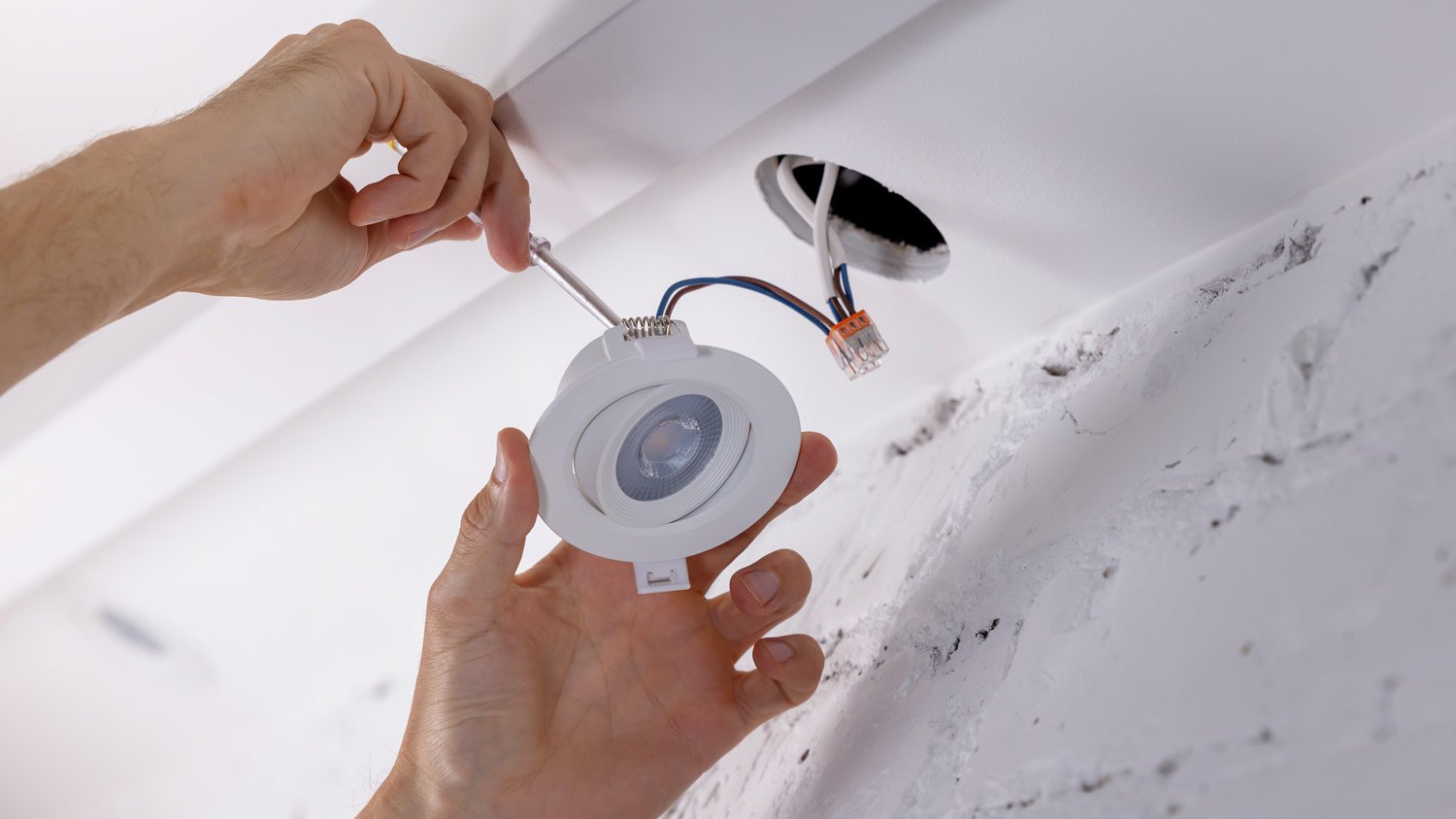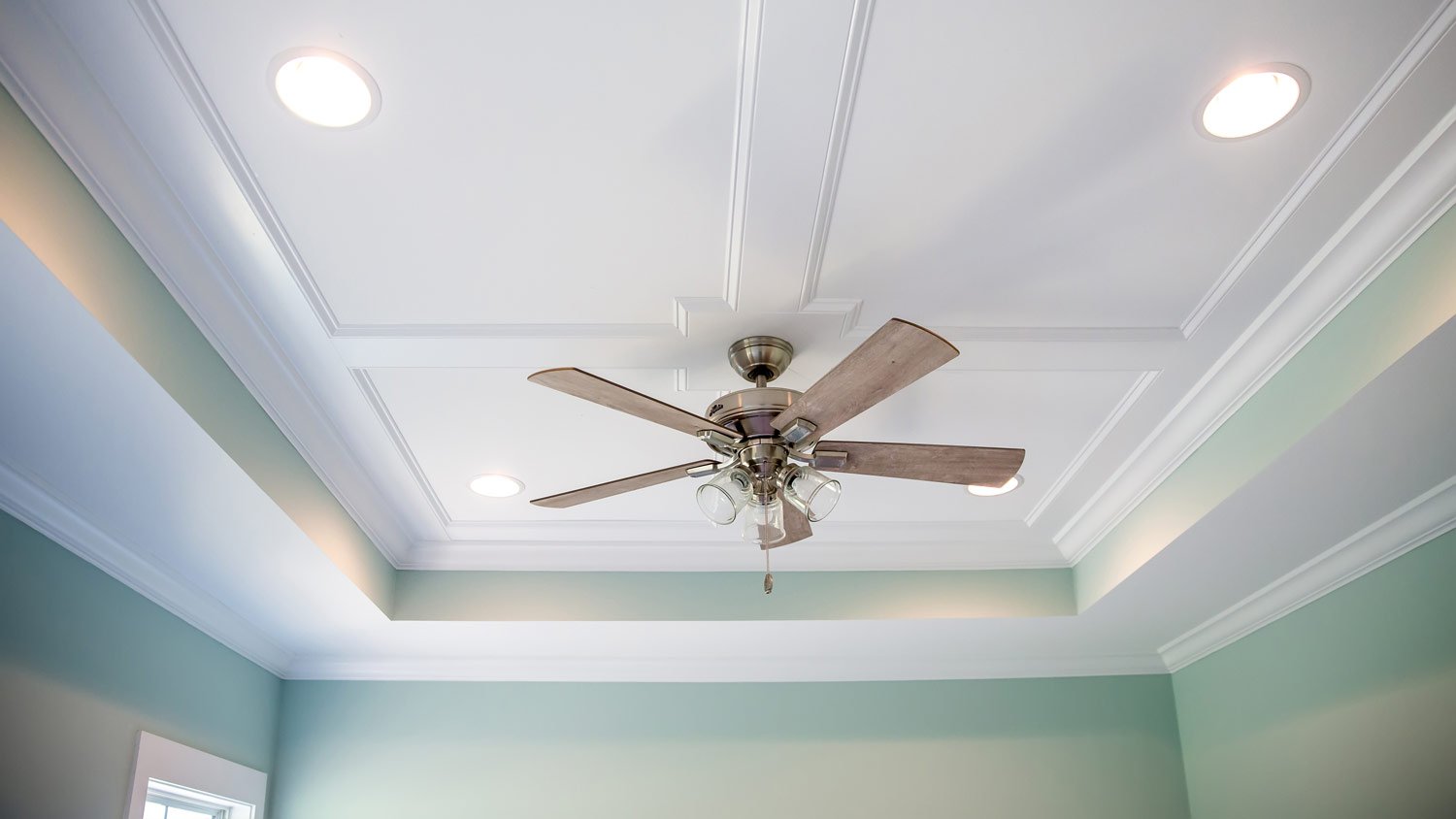
Discover the professional Christmas light installation cost, including average prices, cost factors, and tips to save on your holiday lighting project.
Light it up with the right choice


Can lights are known for their cylindrical, can-like housing.
Recessed lights are available in a variety of designs that serve different purposes.
Can lights always have a housing, whereas recessed lights can be found in all-in-one designs.
If you’re wondering whether can lights or recessed lights are the way to go for your home, you’ve found the right guide. While many think of can lights and recessed lights as the same thing, these two fixtures can have unique functions and designs. Discover the differences between can lights and recessed lights to determine which option is best for your home.
Can lights are a type of recessed light that get their name from their cylindrical housing that resembles a can. They feature an open top with a bulb inside. Recessed lights, on the other hand, are available in a wide variety of styles, and feature trim, a bulb, and sometimes housing. When people talk about recessed lights, they’re often referring to a light installed within the ceiling that is flush with the surface.
These two fixtures do have some differences, especially in their installation process, design, and use.
| Feature | Can Lights | Recessed Lights |
|---|---|---|
| Installation | Ceiling, wall, floor | Ceiling |
| Design | Cylindrical housing | Trim, housing, bulb |
| Function | Easily angled | Can be angled |
| Use | Task lighting | Overall lighting |

The main difference between can lights and recessed lights is the way they’re installed. Can lights can be found in ceilings, walls, and floors. They feature a canister-like housing that is installed in a hole and can become flush with the surface. The can light is then connected to an electrical box through wiring.
Recessed lights are installed in the ceiling and can feature housing or an all-in-one unit, also known as a canless light. This light is placed in the ceiling and connects to your home’s electrical wiring. These types of recessed lights present a more difficult installation and replacement process. When the bulb burns out, the entire unit needs to be removed and reinstalled.
Can lights and recessed lights can also differ in their design. Can lights may protrude from the ceiling and can be more visible than most other recessed lights. There are two main categories of can lights:
IC-rated
Non-IC-rated
IC-rated can lights can have direct contact with insulation as they’re designed with an air gap that keeps the outer can cool. Non-IC-rated can lights cannot be in contact with insulation as they do not have this air gap and will cause a fire hazard.
Recessed lights are usually flush and offer an unobtrusive design that is barely noticeable. They typically feature three main components: trim, housing, and a light bulb. The trims are available in a variety of styles including:
Open trim
Reflector trim
Baffle trim
Pinhole trim
Eyeball trim
Canless trim
Gimbal trim
Wall-wash trim
Shower trim
Each type of trim offers a different aesthetic and function that is best used for certain situations or areas in the home.
Can lights and recessed lights can be used for different purposes. Can lights are often best for task lighting or accent lighting. Their design makes it easier to adjust and angle them to illuminate a specific area or object.
Recessed lights are typically chosen over can lights to illuminate an entire room or area. With a wide variety of trims available, recessed lights are great at providing different types of lighting, including ambient, task, accent, and decorative. They’re also a more modern light fixture.

Can lights and recessed lights can both provide excellent illumination to your home. Each comes with advantages and different designs, but the choice that’s best for you depends on your installation options, design preferences, and targeted function. When making your decision, consider the purpose of the room, your desired mood, and the overall aesthetic.
No matter which option you pick, contacting a local light fixture technician near you to complete the installation will make the job quick and easy. Working with electricity can be risky business, and it’s best to let a pro tackle the job. They’ll be able to answer any questions you have, complete the installation, and make sure everything is working properly. The cost to install a recessed lighting fixture ranges from $100 to $480, but it’s a worthwhile investment to keep you safe.
Rudy was great. Very professional and efficient. Left no trace behind. Lights look great!
A very good company to work with: professional, reasonably priced, and willing to go above and beyond to satisfy the customer. We had rotted wood and new aluminum roof trim installed, and the result is perfect and done on time. I definitely recommend them and will certainly use them for...
The service was excellent! Norwin's trap caught the dangerous bob cat in short order. I am very thankful!
Very professional, fast work & did a fantastic job. Installed foyer chandelier, big screened porch ceiling fan & two hall ceiling lights.
Wayne and his son replaced a 4x8 piece of tempered glass in our sun room , the whole job from start to finish was truly fantastic and very professional !! Highly recommended !! Thank you !!
Brandon Burnette did such a great job. I'm so happy I had him as my worker today. Very nice and friendly young man. 10 star in my book.
We had LHR install a new roof and gutter system. While they were not the cheapest, they were considered the most reliable and fetish for using only high-value products that would last for many years. Additionally, they were highly professional and never tried to push their services or any...
Valley Crest is hands down the best contractor we have ever worked with. He had done more than one project for us, in fact, he does all the builds we have. From our deck to our porch, the projects he has done are the best we have ever seen. ((Wish the site would let us put more than one...
I hired Rob Heiser to install 7 new light fixtures and a post light on my home's exterior. He also installed a path lighting system and a brush box on the outside of my house to connect outdoor speaker cables to my Sonance system. Rob and his sons did an excellent job and were extremely...
They were great to work with and the finished product was excellent. I would highly recommend Blue Painting.
From average costs to expert advice, get all the answers you need to get your job done.

Discover the professional Christmas light installation cost, including average prices, cost factors, and tips to save on your holiday lighting project.

Add a wow factor to your home with a chandelier. Chandelier installation costs depend on style, location, and labor, so learn what you can expect to budget.

Get transparent light fixture repair cost info. Learn what impacts price, compare repair vs. replacement, and find ways to save.

Changing a light bulb seems straightforward, but challenges can pop up. In some cases, hiring a professional light bulb changing service is a good option.

Installing recessed lighting can be a difficult task, so it’s important to hire the right professional to do the job.

If you’re planning to install recessed lighting, one of the first things you’ll do is figure out how many recessed lights you need. Here’s how to do that.